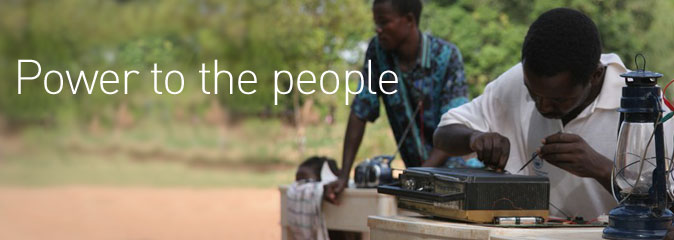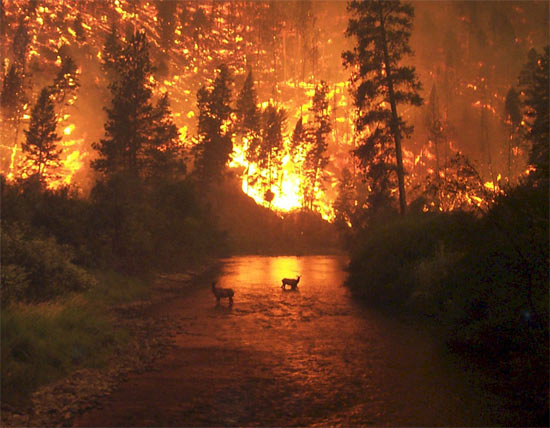I have also added them on our blogroll:
I know I have been bouncing around here from the Democrat Convention to Oil Speculators and now Africa but I ran across these folks awhile ago. I tucked them into a folder and forgot about them. So while I have the folder accidentally open…
About SolarAid
Power to the people
Two of the biggest threats facing humanity today are climate change and global poverty. SolarAid helps to combat both, simply by bringing clean, renewable power to the poorest people in the world.
Fighting poverty
Right now, two billion people have no access to electricity. They rely on burning fuels such as kerosene and wood for light and heat, which is highly toxic and expensive. Having solar power improves people’s health, income and education. That’s because solar power can enable poor people to cook food, pump clean water, run fridges, light homes, schools and hospitals, farm more effectively, and much more.
Fighting climate change
Climate change is mainly due to the massive and continuing use of burning fossil fuels for energy. This has pumped vast amounts of greenhouse gases, primarily carbon dioxide, into the atmosphere. At the same time, we have destroyed vast tracts of forest, which has released billions of tonnes of carbon.
By replacing carbon-emitting products with solar power, and reducing our dependency on fossil fuels, particularly wood, we can alleviate global warming.
Fact:
The average kerosene lamp, used widely across the developing world, creates around a tonne of carbon over seven years. Replacing these lamps with solar lanterns will lead to significant reductions in carbon emissions.
Our history
Our vision
Our vision is to make solar energy as widely available as possible to the poorest people in developing countries, helping them bypass the need for dirty, fossil-fueled power and giving them access to all the educational, health and social services that we take for granted in the West. With two billion people in the world not having access to electricity, that’s quite a vision.
Yet we believe in being ambitious and visionary and we hope you do too. That’s because the two most important threats facing our world today are global poverty and climate change. Both are linked as the poorest countries will be hit the hardest by the effects of climate change. While we do not claim that solar energy is the magic bullet that can solve these problems single-handedly, we do believe it can play a major role, with your help.
Our origins
Although SolarAid was officially started in 2006, the thinking behind it goes back much further, to the founding of Solarcentury eight years ago by Dr Jeremy Leggett, who had worked in the oil industry in the 1980s and then became Chief Scientist at Greenpeace in the late 1980s when he became aware of the threat of climate change.
Solarcentury was set up with the vision that business could help find a solution to climate change through solar energy, so its founders wrote into its constitution that it would donate 5% of its net profit with no commercial strings attached in order to set up a charity to help the poorest communities in developing countries access solar power. Solarcentury made profit in 2006, which is why we then set up SolarAid as an independent charity in August 2006 and gathered support from a wide-range of companies, foundations and individuals, as you can read below.
SolarAid is different to your usual international charity. We join the fights against global poverty and climate change in a way not done before. And from the start, we have aimed to bring together the professionalism of the commercial sector with the values of the charity sector in order to create an organization that will bridge the gap between both. That’s why entrepreneurialism and innovation are at the heart of what we do.
Microsolar, a ground-breaking model
Our microsolar approach is pioneering. We identify entrepreneurs in developing countries, who we then train in business planning, market research and solar skills. We help them set up their solar microbusinesses so that they can build and sell solar lanterns and solar chargers for radios and mobile phones. This came out of research that we carried out that showed that the average household in a developing country spends between 10-20% of its income on kerosene for lighting, single use batteries for their radios, and charging their mobile phones. That’s a lot of money, plus kerosene smoke is toxic, single use batteries are polluting, and mobile phone chargers need access to the electric grid, which most rural areas in developing countries do not have and probably will never have.
Our microsolar model is a perfect solution to this. Our solar entrepreneurs convert kerosene lamps into solar lanterns using light emitting diodes (LEDs, which are cheaper, robust and use little energy) and build solar chargers from local materials and imported solar glass. These solar products can then fulfill much of the average household’s energy needs, leading to a substantial increase in their income because they no longer need to buy kerosene or batteries. The solar entrepreneurs make money too – a win-win situation.
Macrosolar, power for communities
Our macrosolar work involves installing larger solar systems on schools, community centres and health clinics. Barely 2% of rural populations in most African countries have access to the grid, forcing them to rely on kerosene, candles, car batteries and firewood for fuel. Schools cannot teach in the evenings; community centres cannot offer services such as educational videos or vocational training; and health clinics cannot power basic medical equipment such as vaccine fridges.
Yet a standard 300 watt system installed on the roof of a school, community centre or clinic can solve all these issues. In Uganda, for instance, we are installing a solar system on the community office of the Katine Project, a programme run by development charity AMREF and the Guardian newspaper and funded by Barclays bank (read about it on: http://www.guardian.co.uk/katine/2008/feb/28/background.development). In Malawi, we installed a 300 watt system on a community centre, the only place now with electricity for miles around. In South Africa, we installed a solar system on an orphanage. And we are starting to install systems on hundreds of schools, community centres and health clinics in Tanzania and Zambia over the next four years.
Support for SolarAid
We have been fortunate to gather far-reaching support for our SolarAid dream. Following Solarcentury’s example, a number of other companies have come on board: Scottish and Southern Energy provides funding and staff volunteers for our projects in Tanzania; Vodafone and Global Cool provide funding for our Zambia programme; Lloyds of London, through its charities trust, is helping us develop our carbon offsetting scheme; White & Case and Covington & Burling, two leading legal firms, give us pro bono advice; and the City of London, through the City Bridge Trust, supports our communications activities. Foundations have also provided vitally help, from the Big Lottery Fund’s grant for us to research setting up programmes in Tanzania and Zambia, to assistance with UK management costs from Avina Stiftung, the Sylvia Adams Trust, the Polden Puckham Foundation and others.
And crucially, we have a world-class board of trustees and advisory panel. All of them are heavily involved in our work, providing vital advice and contacts as we grow. You can read more about them here.
We launched SolarAid officially in December 2007, with a big event at City Hall in London presented by the Major of London Ken Livingstone. More than 180 people from the energy industry, NGOs, government, African embassies, foundations and others joined us for this celebration.
The future
We want to reach millions of people with solar power over the next few years. But we don’t claim that will be easy. That’s why we need your help. We need hundreds, thousands, even millions of people like you to support us regularly, each month, with whatever donation you can afford: £15 ($30) can pay for a solar lantern; £5,000 ($10,000) can pay for a solar system on a school; and if you’re a high net worth individual, £1m ($2m) can pay for a full-scale four year programme reaching tens of thousands of people in a country such as Tanzania. The need is huge, which is why we urgently need your support to make this happen.
Nor do we claim that implementing our projects will be plain sailing. As anyone who works in international development will tell you, working in a developing world environment is challenging. Basic infrastructure – roads, water, electricity – is often lacking due to few resources; the financial and legal framework – banks, the law courts, state legislation – is weak and laws can be difficult to enforce; corruption is frequent, from the grassroots level to the top of the state, making it difficult at times to operate with confidence; and industry is struggling, making it hard to source many of the materials and products needed to implement a project.
But these are also the very reasons why our work is so important and why we need your support. We want people to understand the challenges and successes of development and how solar power is a part of this. That’s why we’ve designed this website in this way, with blogs to give you the latest news straight from our projects and with the option for you to post your comments too. We want to hear what you think of our work. We want you to be part of this dream. We want you to share in our joys and our hardships.
So please, visit our project pages, click on the blogs, make a donation, and join us on this exciting adventure to bring power to the people.
:}
:}




